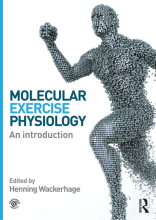T3: Absorption, distribution and excretion
26 important questions on T3: Absorption, distribution and excretion
What ways are there for xenobiotics to pass the cell membranes?
- passive filtration trough aqueous pores
- active transport
- facilitated diffusion
- phagocytosis and pinocytosis
What is passive diffusion or filtration?
This is influenced by, lipophilicity, ionisation and bloodflow
Of the 5 ways by which chemicals can be absorbed into the cell, which requires energy/ATP and which do NOT require energy/ATP?
- Passive diffusion & filtration
- Passive filtration through aqueous pores
- Active transport
- Facilitated diffusion
- Phagocytosis & pinocytosis
Do NOT require energy: passive diffusion & filtration, passive filtration through aqueous pores, facilitated diffusion
- Higher grades + faster learning
- Never study anything twice
- 100% sure, 100% understanding
What drives the movement of a specific molecule between areas in (passive) diffusion, and in (passive) filtration?
Filtration: the molecule moves from a higher pressure area to a lower pressure area
What are the 3 things that passive diffusion/filtration is influenced by and when do these factors make this transport easier?
- Lipophilicity
Chemical is highly lipophilic/hydrophobic --> easier diffusion - Ionization/charge
Chemical is NOT ionized/charged --> easier diffusion - Blood flow
Pressure gradient is large (large pressure difference between areas) --> easier filtration
What is the difference between active and passive transport?
- Active transport is selective, transporters are needed and is only for the larger important chemicals for the cell.
- It requires energy (ATP)
- There is a Tmax, the transport system can be saturated.
What is facilitated diffusion?
The pH of the environment affects ionization/charge of the chemical, which influences the degree of absorption into the cell. Which of these two compounds is better taken up by cells in the stomach?
What two groups of integral membrane proteins are involved?
- Ion channels (Cl, Na)
What is phagocytosis and pinocytosis?
Ingestion of particles, mostly done in the immune system.
- Cell drinking
Ingestion of drops or small particles (< 1 um), can be done by almost every cell.
There are a lot of different exposure routes thorugh the body, what are the differences between them?
Example uneven ditribution of toxicants:
-liver and kidneys: high capacity for binding and accumulation of toxic substances
What happens when a chemical is applied to the skin?
What are the unique espects of oral exposure?
- concentration
- duration + level of exposure
- erea of exposure (villi)
- epithelial layer
- sub epidermal blood flow
- Physico-chemical properties
Which 2 types of membrane proteins do facilitated diffusion?
- Carrier proteins/protein transporters (EX: glucose transporters)
- Ion channels (EX: Cl-, Na+ transporters)
What is the first pass effect?
For some compounds this metabolism will unactivate the compound. Therefore not all chemicals can be oraly consumed.
What cells do phagocytosis - when the cell takes up ("eats") particles - and what cells do pinocytosis - when the cell takes up ("drinks") drops or small fluid particles?
Pinocytosis: almost all cells
Some pesticides bind covalently to the enzyme, what is the effect?
The distribution of a compound in the body is dependent on.....?
- diffusion out of capillary bed into the cells
- active transport into cells
- binding to plasma and tissue proteins
- storage in tissue (fat, liver, bone)
- specific barriers (blood-brain barrier)
the distribution can be uneven, this can result in toxicity in specific tissues.
What is the role of plasma proteins?
How are compounds stored in the bones?
How does the first pass effect influence what chemicals reach the body?
in the liver, the chemicals can get metabolized -->
metabolized form reaches the rest of the body
What can be a danger of fat storage?
A chemical is taken up by the GI tract and is taken through the (hepatic) portal vein to the liver where it can be metabolized, after which the chemical is distributed in the body by the blood. What is this cycle called?
The blood distributes toxic chemicals throughout the body (which can be uneven, which can contribute to toxicity in specific tissue). Where do the chemicals go and how?
- Diffusion out of capillary bed --> into cells
- Active transport --> into cells
- Binding to plasma proteins
Binding to tissue proteins - Storage (& accumulation) in tissue --> fat, liver, kidney, bone
What 4 characteristics of the blood-brain-barrier make the brains harder to reach for toxic chemicals than other tissues?
- No fenestrae (= openings that facilitate transport)
- Tight junctions --> less permeability
- Low protein content of interstitial fluid --> less binding proteins
- Mainly active transport over the barrier
The question on the page originate from the summary of the following study material:
- A unique study and practice tool
- Never study anything twice again
- Get the grades you hope for
- 100% sure, 100% understanding






























